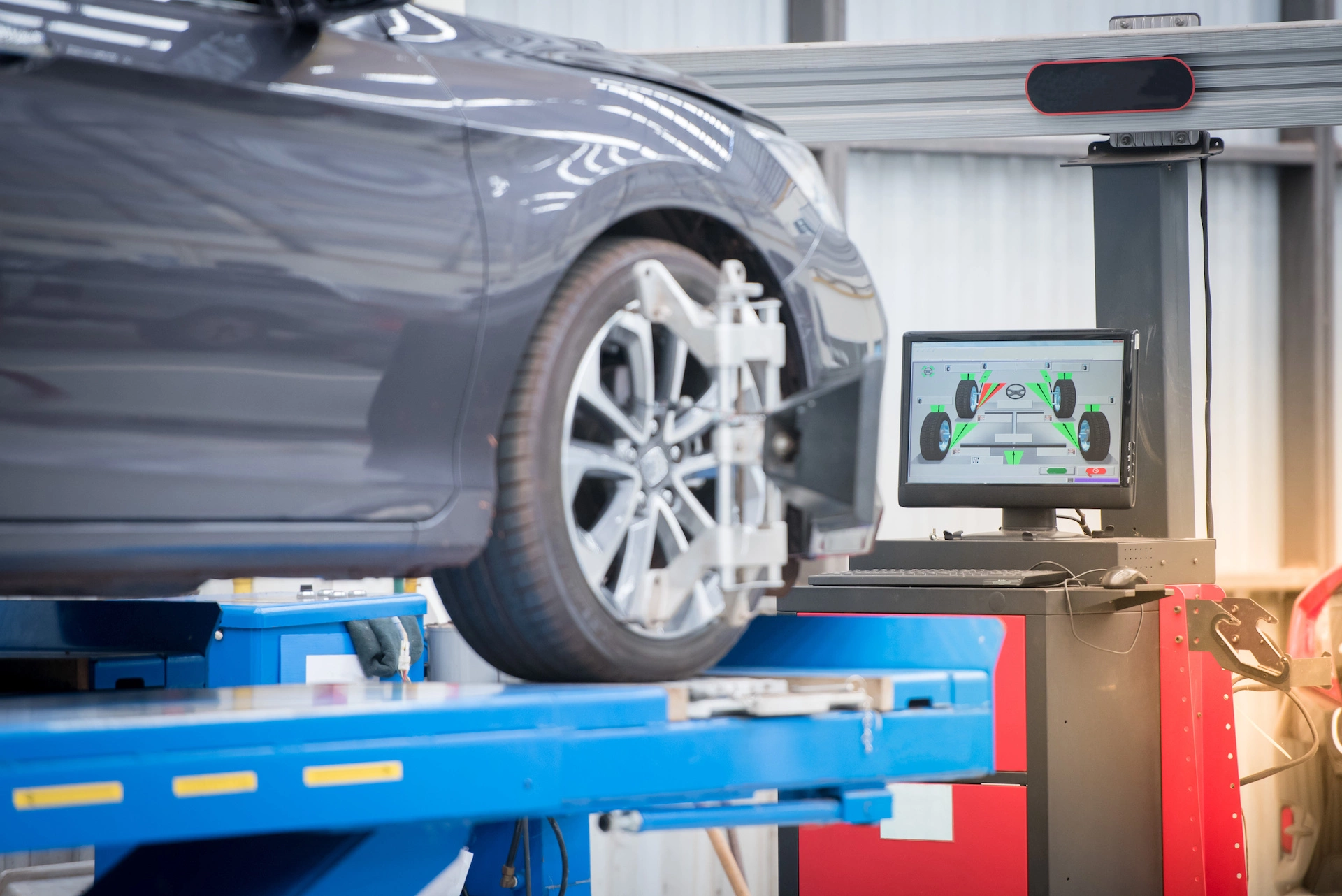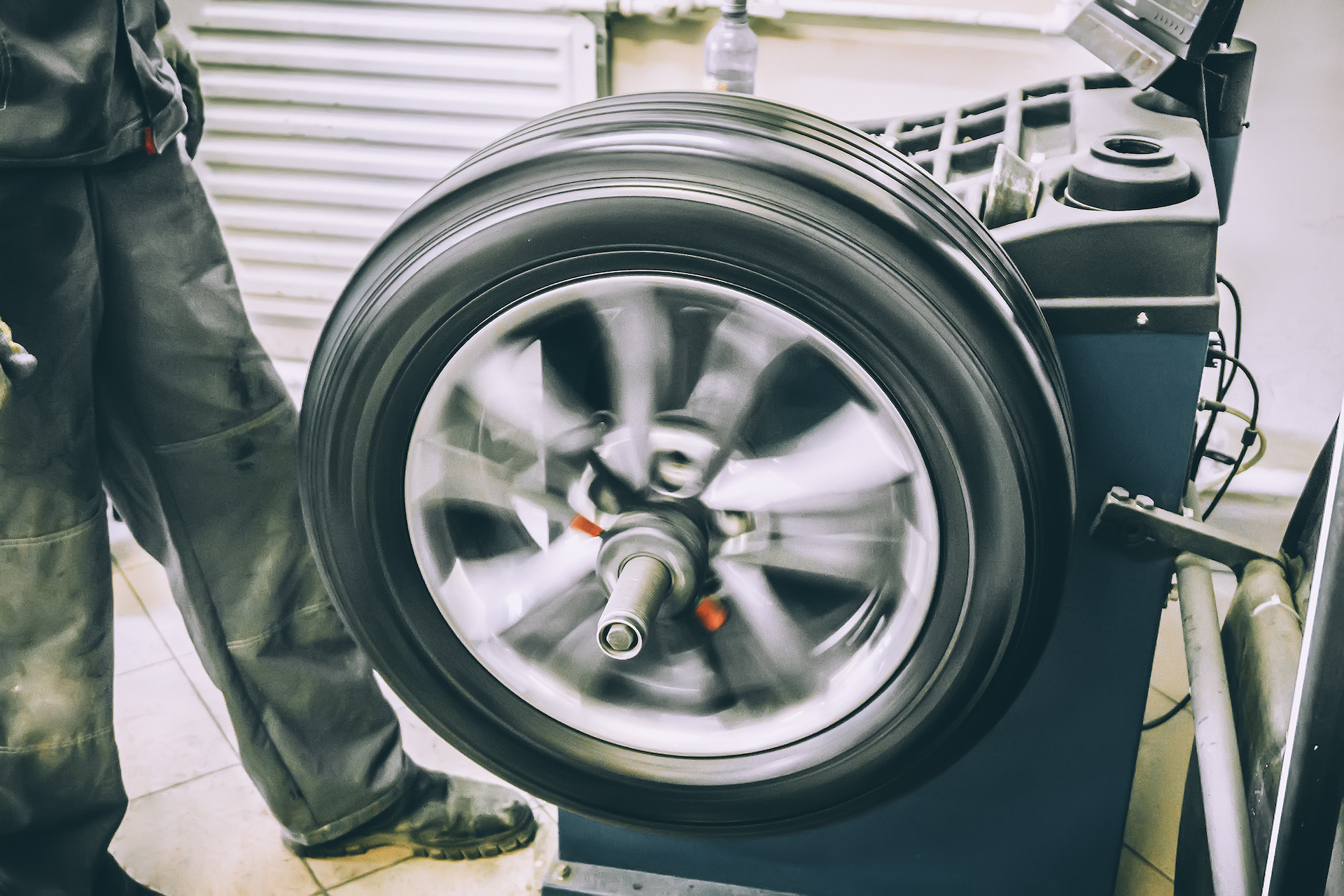Everything You Need to Know About Wheel Alignment & Tyre Balancing
Jack Dreyer | Wednesday 5th August 2020 2:30pm

One of the most common questions that we get asked in our centres is if wheel or tyre balancing and wheel alignment are the same things! This is a valid question since they both sound very similar and aid the long-term health of your tyres.
While it’s easy to confuse the two, the balancing and alignment of wheels are, in fact, two very specific practices that impact your tyres in different ways.
So, to clear up any confusion, we’ve written a handy guide to both wheel alignment and tyre balancing. Read on for a closer look at each one and the benefits it can bring to you and your car.
What is the difference between wheel alignment & tyre balancing?
Tyre balancing and wheel alignment are two very different practices. While balancing addresses the distribution of weight around the wheel, alignment looks at the position of the wheels in relation to the road and each other. Let’s investigate in more detail.
What is tyre balancing?
Tyre balancing ensures that weight is distributed equally around the wheel and that the tyre rotates evenly. This involves adding small balancing weights to the rim which counter any inconsistencies.
If you imagine a set of balancing scales, when you add a heavy weight to one side the scales will tip. If you then add a number of smaller, less heavy items to the other side, the scales will gradually begin to tilt the more you add, until finally, when you have added enough smaller weights, the scales will once again level out. Add too many weights and the scales will tip the other way.
Although this is a simpler example, tyre balancing works in the same way. If an imbalance towards one side of the wheel is identified, wheel weights are added to the opposite side to even out the distribution of weight.

Why is tyre balancing important?
It’s important to address wheels that are not correctly balanced to ensure you receive the best ride comfort. Incorrectly-balanced wheels produce a vibration that is felt through the steering wheel when travelling above a certain speed. This can cause considerable discomfort over time.
Balance issues can cause premature wearing of your tyres, suspension and steering components. You can see the negative impact that out-of-balance wheels can have on your tyres in this video:
How does tyre balancing work?
Tyres can be balanced on a tyre balancing machine available at all Kwik Fit centres. The tyre and wheel assembly are mounted on the machine which then spins the wheel to calculate even the slightest variance in weight across the wheel. .
The balancing machine then highlights the exact position where a counterweight should be applied and which size of weights to use to balance the wheel correctly. .
You can learn more about Kwik Fit’s service and the wheel balancing process here.
What is wheel alignment?
Wheel alignment involves checking the direction and angle of the wheels to ensure they remain parallel to one another. Adjustments can then be made to the tie rods and control arms to correct alignment. This has several benefits, but the easiest to remember is that a-lign-ment helps you to drive in a straight “line”, since vehicles with misaligned wheels can pull or drift to one side.
Wheels should be aligned to the optimum position as per the vehicle manufacturer’s recommendation, which involves adjusting the “toe”, the “camber” and sometimes the “caster” angle.
"Toe" refers to whether the front of the tyres are closer or further apart than the rear of the tyres, whereas “Camber” describes the inward or outward tilt of the tyre. “Caster” refers to the angle between vertical and the steering pivot axis and can be adjusted by moving the suspension struts. This video will give you a better understanding of each.
Why should my wheels be aligned?
Wheel alignment can be necessary for most cars, as wheels generally become misaligned over time because of road conditions. For example, hitting a pothole, a curb or even a speed bump are all common causes of wheel alignment problems.
If your wheels are misaligned, you can experience uneven tyre wear, the car pulling to the left or right, and uneven braking, all of which can be incredibly dangerous for anyone travelling in the car.
So, it’s recommended that you have your alignment checked every year. Doing so could save you money in the long run as you’ll be changing your tyres less frequently and spending less on fuel, due to the reduced rolling resistance of the correctly-aligned tyres.

Wheel alignment checks
Wheels can be adjusted using specialist alignment equipment which measures the following:
- Either just the front wheels: 2-wheel alignment, also known as tracking
- Or all four in relation to one another: 4-wheel alignment
4-wheel alignment has added benefits, including resetting the steering wheel to a straight position and ensuring optimum performance and driving comfort.
At Kwik Fit, at the majority of our centres we use the Hunter Hawkeye 4-wheel alignment machines, which use a series of high-definition imaging sensors to measure 14 primary alignment angles on your wheels.
These are then compared against our vehicle manufacturer data, ensuring your vehicle is set up perfectly for you to drive. For more information or to book in a free wheel alignment check, have a look at our wheel alignment service page.
Fix wheel alignment & tyre balancing issues today
If your vehicle is experiencing tyre balancing, wheel alignment, or wheel tracking problems, get in touch with the experts at your nearest Kwik Fit who can help you get safely back on the road in no time at all.
Looking for more tyre maintenance? Have a look at some of the other tyre and wheel services that we offer here.
Any facts, figures and prices shown in our blog articles are correct at time of publication.
Featured Articles
Is it Illegal to Drive With One Headlight?
Saturday 19th July 2025
Wondering if it’s illegal to drive with one headlight? Learn about the safety risks and penalties of illegal blown bulbs and why you should fix them promptly.
Air Con in EVs & Hybrids: Experts Answer Your Questions
Monday 30th June 2025
Does air con drain EV batteries? Can you use the air con while charging an electric car? Find out the answers to these questions & more from Kwik Fit’s experts.
Why Is Your Car Making a Noise? Fixes & Tips
Friday 13th June 2025
When your car starts making unexpected noises, it can certainly be quite disconcerting; it may be nothing to worry about, but here’s what you need to know.









